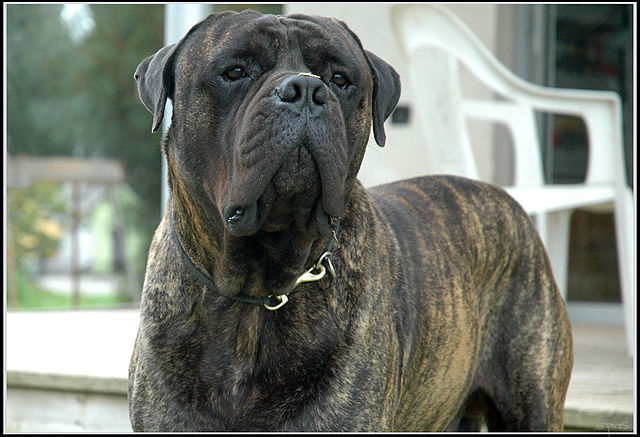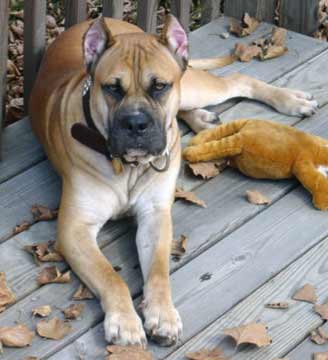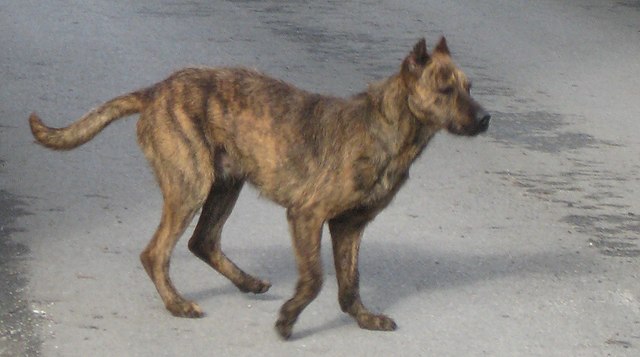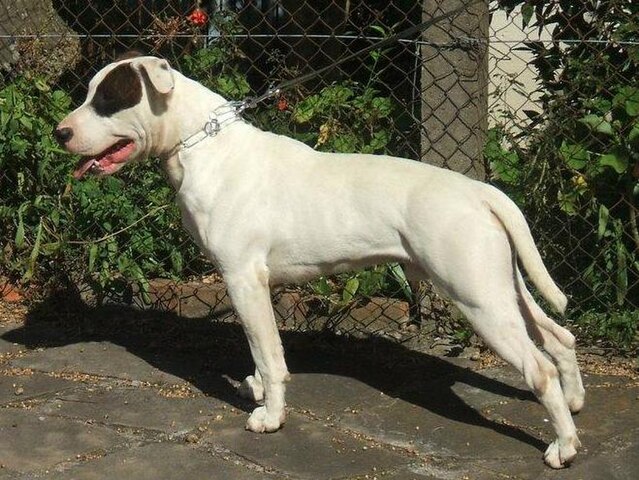The Bullmastiff was developed to keep poachers off the land of large estates. He wasn’t bred to maul the poachers, however he would track them down and hold them until owners (or the police) could deal with the situation. As such, this is an extremely strong, confident dog who should only be kept by an experienced owner. Those that do own this breed will attest to their unwavering loyalty and gentle nature toward even the smallest family members. However, anyone that wants to do the Bullmastiff’s family harm will be met with a force to be reckoned with.
Unlike some other guard dog breeds, the Bullmastiff is very laid-back in the home and doesn’t bark unnecessarily. He will not put on “a show” of aggression when people walk up the driveway or knock on the door. In fact, aside from their intimidating looks and massive frame, they act more the part of cuddly family companion than they do as deterrent. The patient and affectionate nature of the Bullmastiff is not an act at all. They love their families so much that they would defend them, to the death, if need be. This is worth mentioning, because most owners actually want a dog who will make a big show to scare away potential-baddies, whether or not the dog will actually back it up. The Bullmastiff is almost the opposite of this, and the owner better be prepared if/when the dog DOES back it up. These dogs can be liabilities in the wrong hands.
Independent thinkers, the Bullmastiff is not a push-button obedience dog but this doesn’t mean they cannot be trained. Some will fake being dumb to try to get out of training! Do not fall for this act – this is a breed that absolutely must have training! Untrained members of the breed are prone to dominance issues and will try to take over the household. It is not recommended to let a powerful, 130 pound dog make the rules. As strong-willed as they are, every owner must be stronger-willed.
The Bullmastiff is not a difficult dog to take care of. His coat requires very little brushing and even less frequent bathing. He doesn’t require a lot of exercise, and is not particularly active aside from following his owner from room to room. He can be kept as easily in an apartment as in a large house, although he will need to be walked a couple of times daily if he doesn’t have access to a yard. These things said, if you own a house, he should never be a backyard-only dog. A Bullmastiff that doesn’t live with inside with the family is prone to develop major behavioral problems, including aggression issues. One of the biggest considerations of owning one of these dogs (besides the obvious commitment to training) is the cost – their larger size also means larger food and vet bills.
Clean freaks beware – the somewhat pendulous lips of the Bullmastiff means that he is a drooler. He will also happily douse your clothes in water after drinking. In addition, the shape of the head makes this breed more likely to snore. Oh… and did we mention that the breed can be prone to gassiness?
Because they love their people so much, they would prefer that their owner be home all of the time. Bullmastiffs prefer to be touching their owner at all times – a paw up against their human’s leg or large head resting on a lap. This said, they are capable of being home alone without too much fuss. They were bred to guard huge estates fairly independently and won’t expect 24/7 companionship.
Although they are excellent companions for children, they can sometimes be aggressive with other dogs – particularly if they haven’t been socialized. Dogs of the same sex are more likely to have problems with each other. If one is thinking about owning two Bullmastiffs, it is recommended to go with a male and a female for best results. They can get along well with cats, although some are more prey-driven than others. Once again, socialization is important in this aspect.




